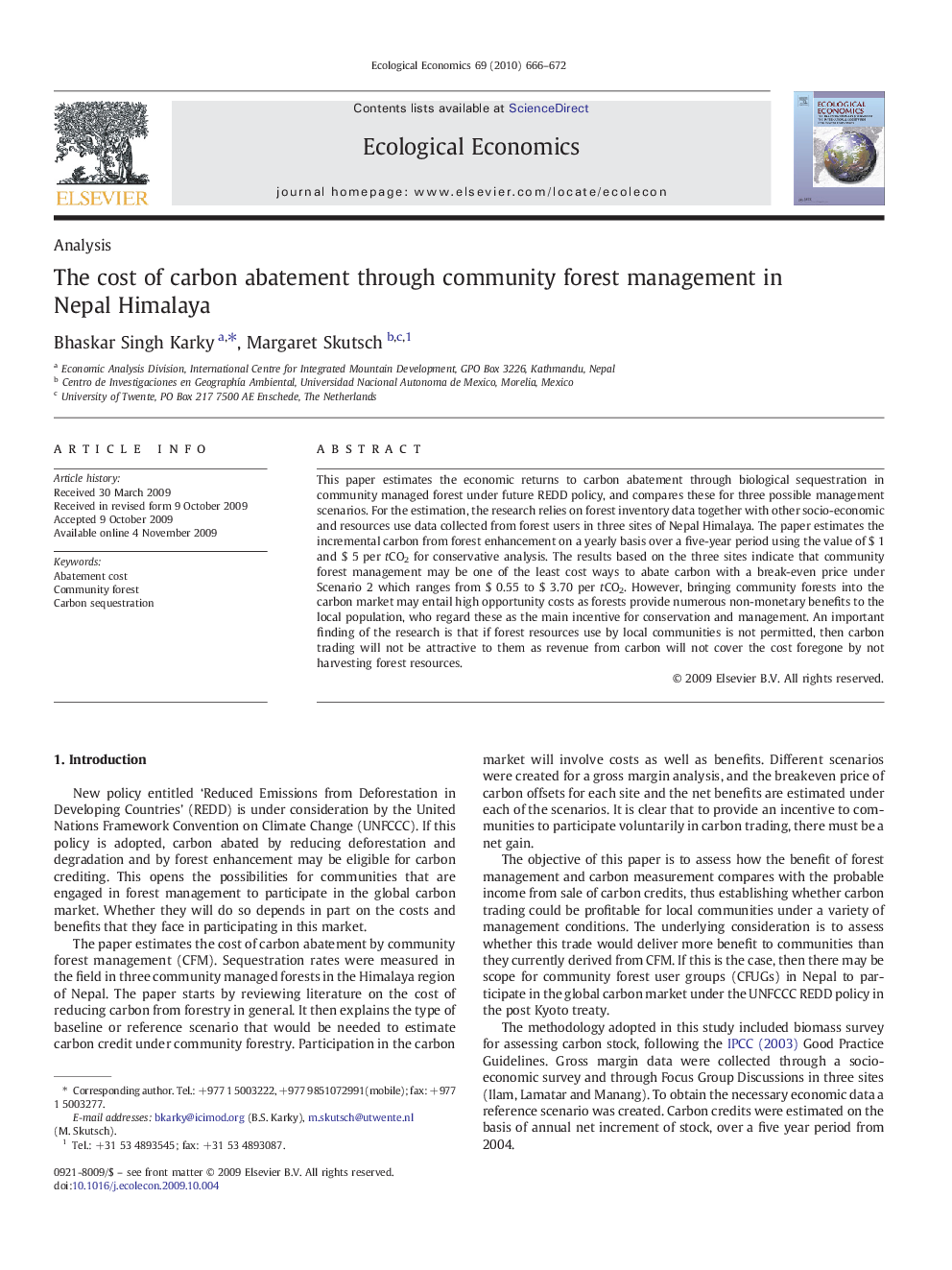| Article ID | Journal | Published Year | Pages | File Type |
|---|---|---|---|---|
| 5051135 | Ecological Economics | 2010 | 7 Pages |
This paper estimates the economic returns to carbon abatement through biological sequestration in community managed forest under future REDD policy, and compares these for three possible management scenarios. For the estimation, the research relies on forest inventory data together with other socio-economic and resources use data collected from forest users in three sites of Nepal Himalaya. The paper estimates the incremental carbon from forest enhancement on a yearly basis over a five-year period using the value of $ 1 and $ 5 per tCO2 for conservative analysis. The results based on the three sites indicate that community forest management may be one of the least cost ways to abate carbon with a break-even price under Scenario 2 which ranges from $ 0.55 to $ 3.70 per tCO2. However, bringing community forests into the carbon market may entail high opportunity costs as forests provide numerous non-monetary benefits to the local population, who regard these as the main incentive for conservation and management. An important finding of the research is that if forest resources use by local communities is not permitted, then carbon trading will not be attractive to them as revenue from carbon will not cover the cost foregone by not harvesting forest resources.
